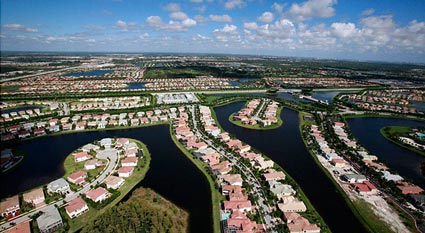Taxpayer Costs of Build-Out
Why is Build-Out Important?
Build-out represents the total amount of residential development approved for construction by your local politicians. As they approve more, the build-out number keeps getting even bigger. Politicians rarely, if ever, look at the big picture for the future — build-out — when they consider yet another request for yet another housing development. Requests are considered in a vacuum. As a result, politicians simply don’t consider the long term consequences of their actions.
With very few exceptions, they vote YES.
Ask your local politicians if they know what the build-out is for your community and whether they include build-out in their consideration of requests for a new round of residential development.
Once you know the build-out for your community, you can use PriceOfSprawl.com to get a picture of the tax bill politicians have stuck to taxpayers for the growth. You can also use PriceOfSprawl.com to determine just how stretched your drinking water supply will be in the coming years. Knowing build-out helps re-frame the discussion from a new proposal for even more new residential development to a new focus: how much a neighborhood, a community, a town, or a county can handle without being overwhelmed, both fiscally and environmentally.

Check the map to see how much residential development your politicians have already approved that has yet to be built. So why do they keep rubber-stamping more?
How many additional people will live in your community if all land currently designated for residential housing is built out?
How many is too many?

What does buildout mean for your community?
Look at the info for your city or county. Imagine your community with 25%, 50% or 200% more people.
What will traffic be like? Schools? What will your life be like? How much more drinking water will be required?
What will taxpayers have to pay to reach build-out? Calculate the taxpayer bill.
Understanding why growth doesn’t pay its way:
Land designated as “residential” is legally entitled to roads, schools, drinking water, sewer, police, fire, playgrounds, and all the other infrastructure components that make a community.
The taxes (and possibly impact fees) paid on the new development do not cover the costs for providing it with basic infrastructure and services. The difference is paid by the rest of the community. Because new development does not pay its way, most local governments in Florida are financially upside down.
Existing neighborhoods subsidize new residential development. Scarce revenue is diverted to the endless hole of servicing new development instead of maintaining existing neighborhoods. The revenue deficit can never be satisfied, and all the while roads become ever more congested, schools crowded, library hours cut, safety services diminished. Your quality of life declines.
Cost of services studies show Florida taxpayers pay $1.39 – 2.45 for every tax dollar paid by a new development. Costs at the higher end of this range are for development in rural areas.
(see the Tischler Report & the FIELD Model)
So when politicians consider whether to approve another 100, 500 or 1000 houses, how much will it cost you? Is the developer paying impact fees? Impact fees rarely cover the costs of services and infrastructure for new development. If a developer donates land for a new school, know that it does not cover the cost of school construction or the costs of personnel, books, computers and other equipment. These costs need to be covered before saying YES to more development.
